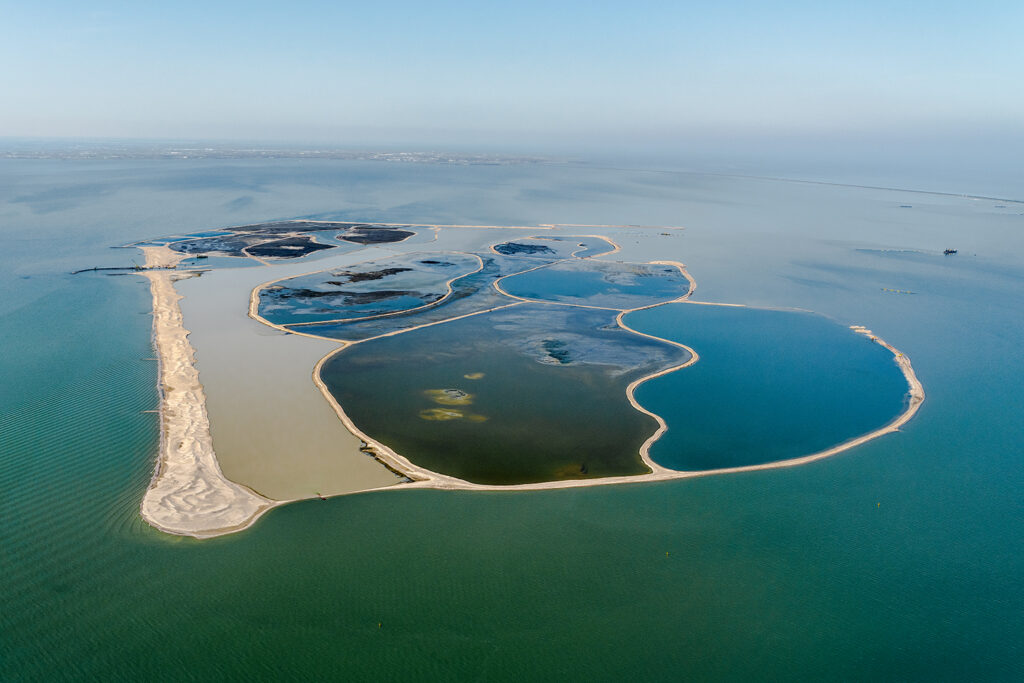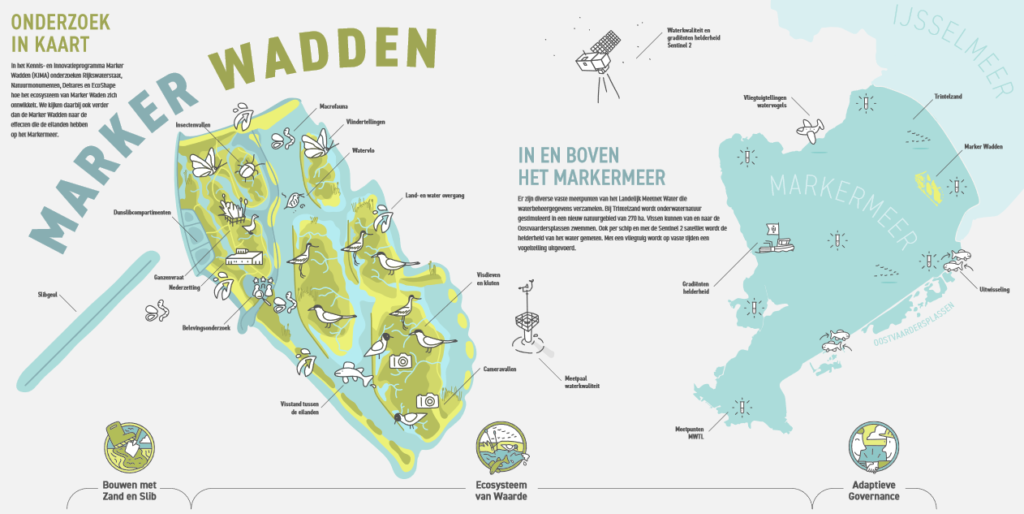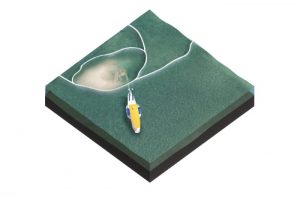Overview
Building new land or islands with sediment is one of the strategies to enhance or restore present-day ecological habitats and to prepare for future sea level rise. Material can be dredged at locations that have too much fine sediment, such as harbours and lakes, and can be used for the build-up of new (is)lands. Moreover, fine materials (when properly treated) can be also used as substrate for hard infrastructure (port terminals for examples) or developments in land reclamation. This provides an opportunity to solve the problems related to an excess of sediment, such as reduced water quality, reduced primary production and reduced navigability. At the same, fine sediments provide a building block for the building of new land. Therefore, we should enhance the win-win opportunities to correlate human activities (which happen anyhow) to beneficial sediment use for nature, water quality, human development.

The new (is)lands that haven been implemented in the past were predominantly designed for their diverse habitat with ecological value, such as the Markerwadden and island building in the Atchafalaya river (US) (Foran et al., 2018). However, there are multiple other goals that can be aligned with the strategy of building (is)lands with fine material: new islands can be designed such that they have the potential to grow with sea-level rise or such that they provide protection against waves and currents for the nearby populated land. If the islands are designed in such a manner that new sediment can settle on or near the islands, they have the potential to grow with sea-level rise. Islands that are placed in an area that currently suffers from coastal provide a more sheltered area along the coast, which increases flood safety for the populated mainland.


